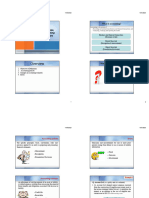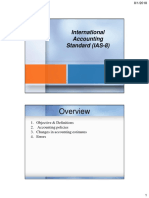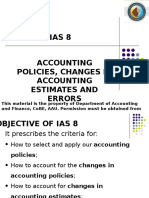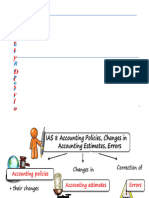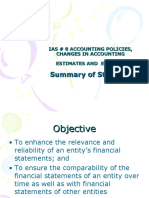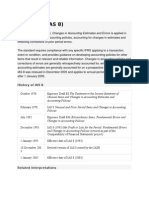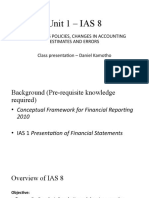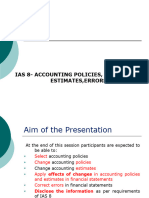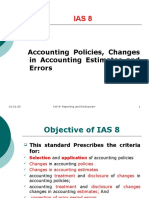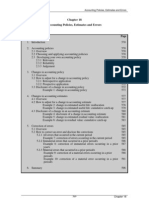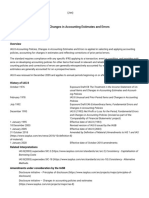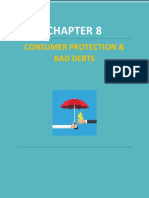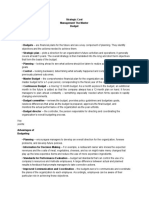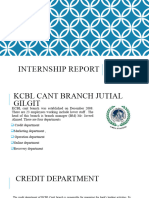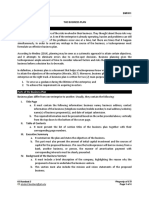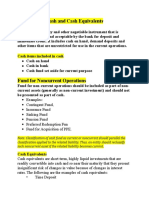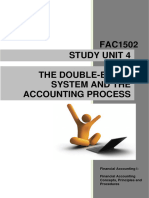0% found this document useful (0 votes)
90 views36 pagesAccounting Policy & Estimate Changes
IAS 8 provides guidance on accounting policies, changes in accounting estimates, and errors. It aims to enhance the relevance and reliability of financial statements. The standard requires retrospective application for changes in accounting policies, except if a new standard specifies different transitional provisions. It also requires prospective application for changes in accounting estimates. Extensive disclosures are necessary for any changes.
Uploaded by
Hanh CaoCopyright
© © All Rights Reserved
We take content rights seriously. If you suspect this is your content, claim it here.
Available Formats
Download as PDF, TXT or read online on Scribd
0% found this document useful (0 votes)
90 views36 pagesAccounting Policy & Estimate Changes
IAS 8 provides guidance on accounting policies, changes in accounting estimates, and errors. It aims to enhance the relevance and reliability of financial statements. The standard requires retrospective application for changes in accounting policies, except if a new standard specifies different transitional provisions. It also requires prospective application for changes in accounting estimates. Extensive disclosures are necessary for any changes.
Uploaded by
Hanh CaoCopyright
© © All Rights Reserved
We take content rights seriously. If you suspect this is your content, claim it here.
Available Formats
Download as PDF, TXT or read online on Scribd
/ 36
